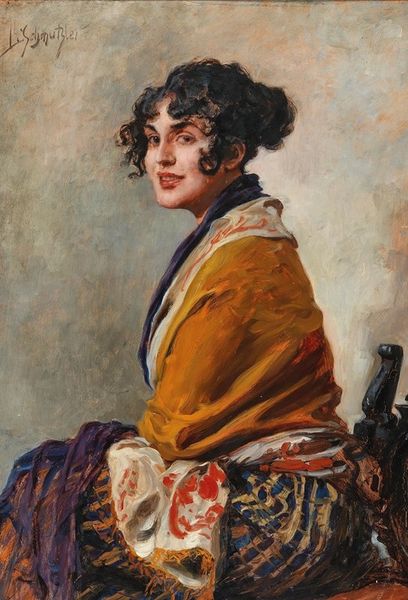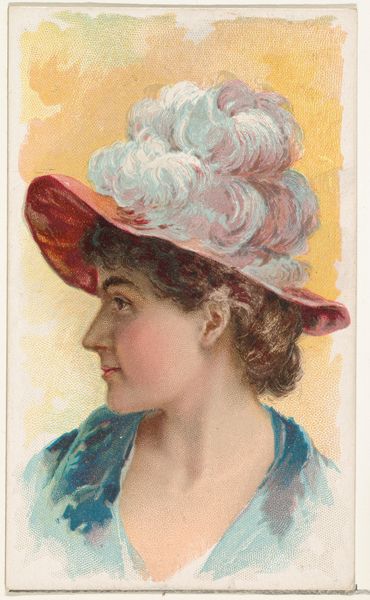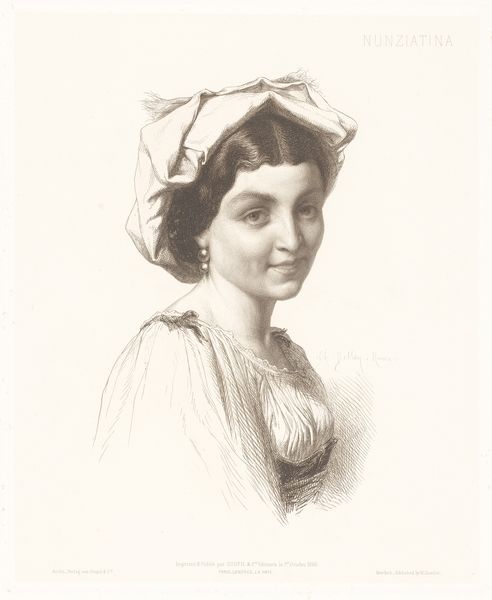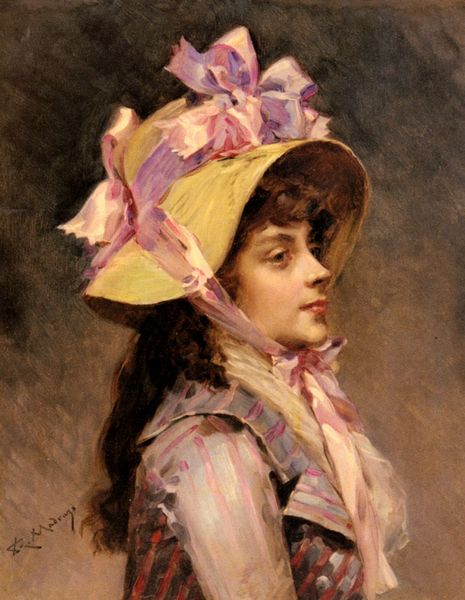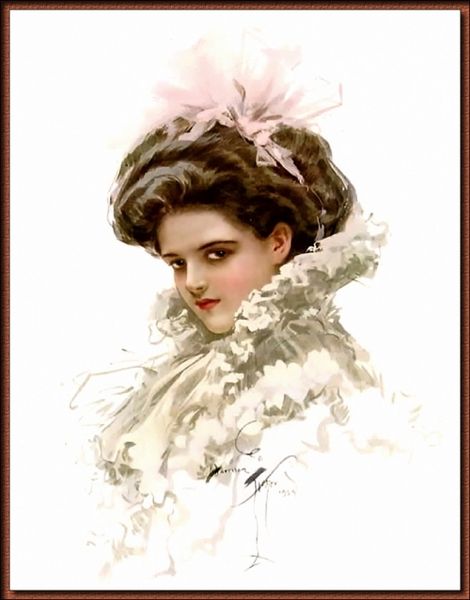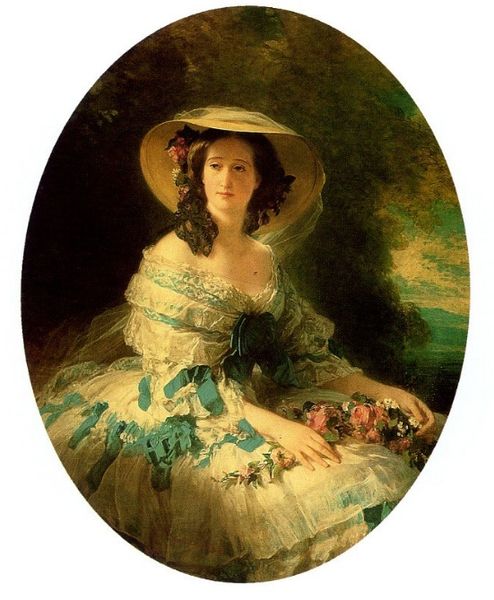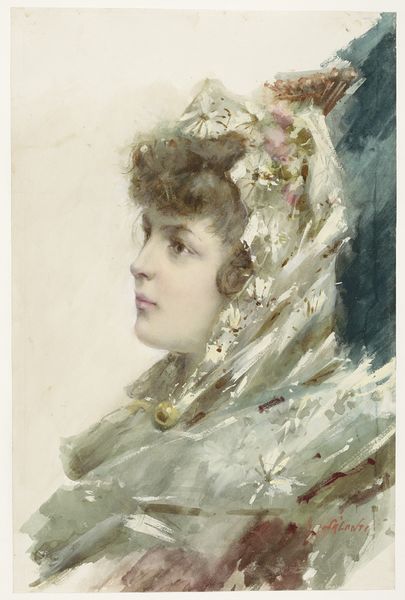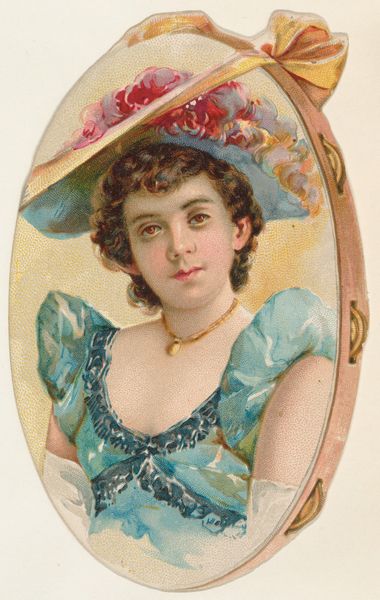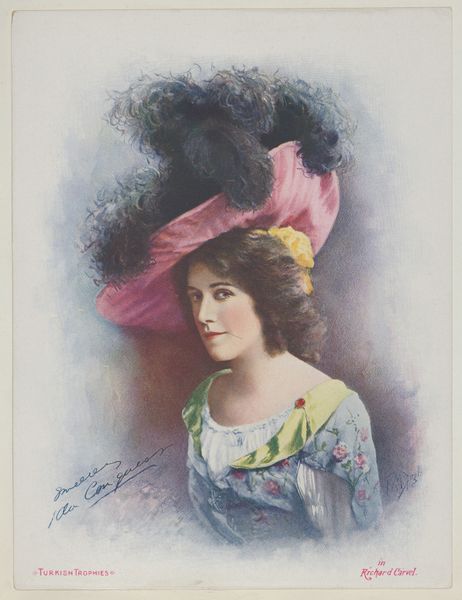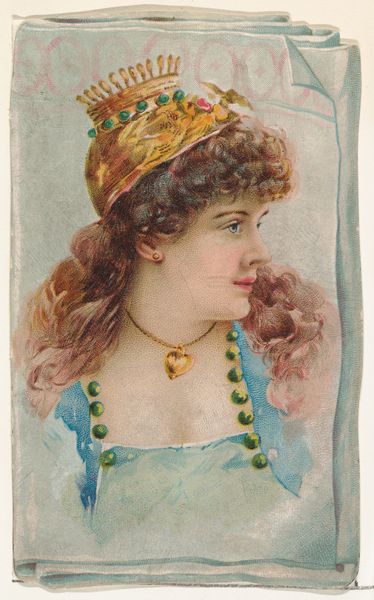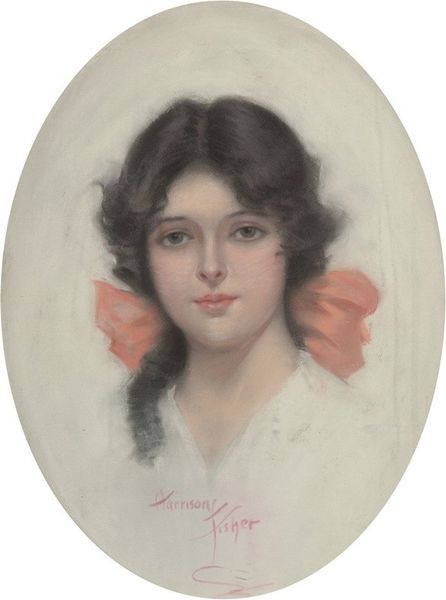
painting, watercolor
#
portrait
#
figurative
#
painting
#
watercolor
#
genre-painting
#
academic-art
#
italian-renaissance
#
portrait art
#
realism
Copyright: Public Domain: Artvee
Editor: This is Eugen von Blaas’s "An Italian Beauty," a watercolor painting from 1896. She seems both lively and demure; her eyes draw me in. What can you tell me about it? Curator: Notice how Blaas has carefully arranged the details. The rose in her hair, the floral shawl – these aren’t just decorative. Roses, for centuries, have symbolized love and beauty, particularly in Italian art. Do you think this is simply romantic? Editor: I suppose, at first glance, yes, romantic and…idealized? Curator: Think about the period. It’s the late 19th century; Italy is rediscovering its national identity. Genre paintings like these often depicted romanticized visions of regional life. The woman’s attire, likely traditional, speaks to a specific cultural heritage, now becoming a symbol of a unified Italy. But, why watercolor? What does it communicate differently than oil on canvas? Editor: Well, the watercolor feels lighter, more transient, almost dreamlike? Curator: Precisely. The fleeting quality of watercolor can evoke nostalgia, a yearning for an idealized past. It allows Blaas to capture not just a portrait, but a feeling, a cultural memory. Consider how even the positioning – the way she glances over her shoulder – contributes to the narrative. Who is she looking at? What does she see? What is the painter seeing, really? Editor: So, it's more than just a pretty picture; it's about national identity and collective memory, told through symbols? Curator: Exactly. Art serves to keep traditions and feelings alive across the decades. Editor: I'll never look at a rose the same way again! Curator: And that’s the beauty of art history; it enriches our understanding and brings new awareness to familiar things.
Comments
No comments
Be the first to comment and join the conversation on the ultimate creative platform.
